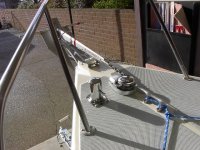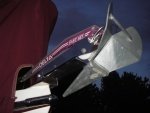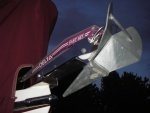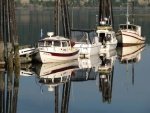These are great comments on how to rig your anchoring system up to allow saving your back by working out of the cockpit.
Whatever system you finally adapt, be sure to size the components up to match the expected conditions you will encounter.
As a side comment, anchoring does often (really very often) require some special variation to adapt to specific circumstances: bottom type, depth, limited swing area, tidal and current variations, wind/storm happenings, crazy things like old logging cables stretched over the bottom to snag on, etc., etc.
I have some limited mobility because of hip and back problems, so I am familiar with the problems you face.
My solution has been to simply employ the windlass adaptation, and it has been generally vary successful, IMHO.
Here are my recommendations for that solution (as an alternative to consider):
Building a heavy-duty anchoring system with push-button control.
Get the best anchor for the places you anticipate anchoring, and size it up one if not two sizes: e.g.: get the 22 lb instead of the 14 lb (even though they say the 9 lb will work with a 22 ft boat!) I use a Fortress FX-16 (suitable for a 38 foot cruiser) instead of the FX-11 or FX-7).
Add 100 ft of chain and 250-300 ft of rope suitable for your windlass.
Add a drop-nose (pivoting) anchor roller to automatically aid in launching the anchor.
Pick a quality windlass with at least 500 lbs of pull and install it properly and buy or make a remote controller wired into it so that it can be controlled from either the regular helm switch or from the wired remote that can be led up through the forward deck hatch and to the bow.
Now use the system to deploy and retrieve your anchor from the helm in at least 95% or more of your anchoring exercises.
Remember to go forward to tie (snub) the anchor rode to a suitable cleat or bollard for heavy weather or overnight security, and to take the strain off the windlass.
If you get a fouled rode or anchor, open the forward hatch and go up on the bow with the wired remote and straighten it out. You might make a boat hook available in the hatchway, as well as a cleaning/wash brush for mud removal.
Be very careful with that remote: the windlass and chain & rope rode can cut like a chainsaw! Good shoes and gloves are recommended! (No bare feet, flip-flops, serious drinking, etc. allowed).
With this, you anchoring is 95%+ done from the helm, and when you do have to go up there, the forward hatch is a safe way to get there (as it would be in any system vs walking the gunnel around the cabin).
This is not a cheap solution, nor is it perfect, but almost every solution in boating is some sort of a forced choice compromise, and I like this one best of all for my anchoring. YMMV!! :lol:
Joe. :teeth :thup





